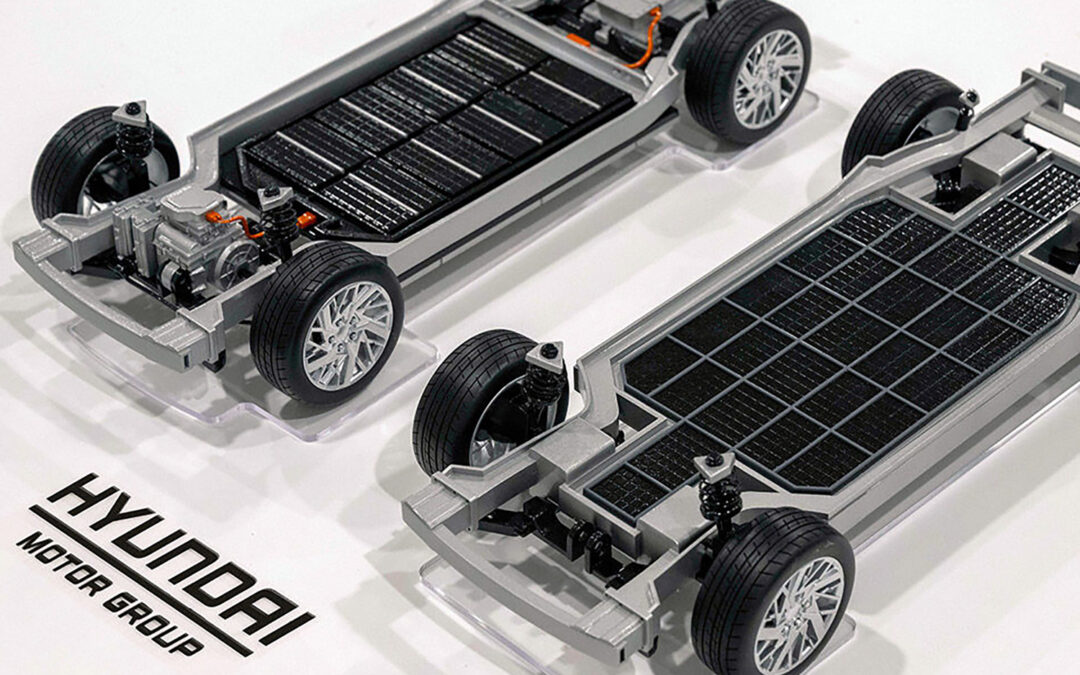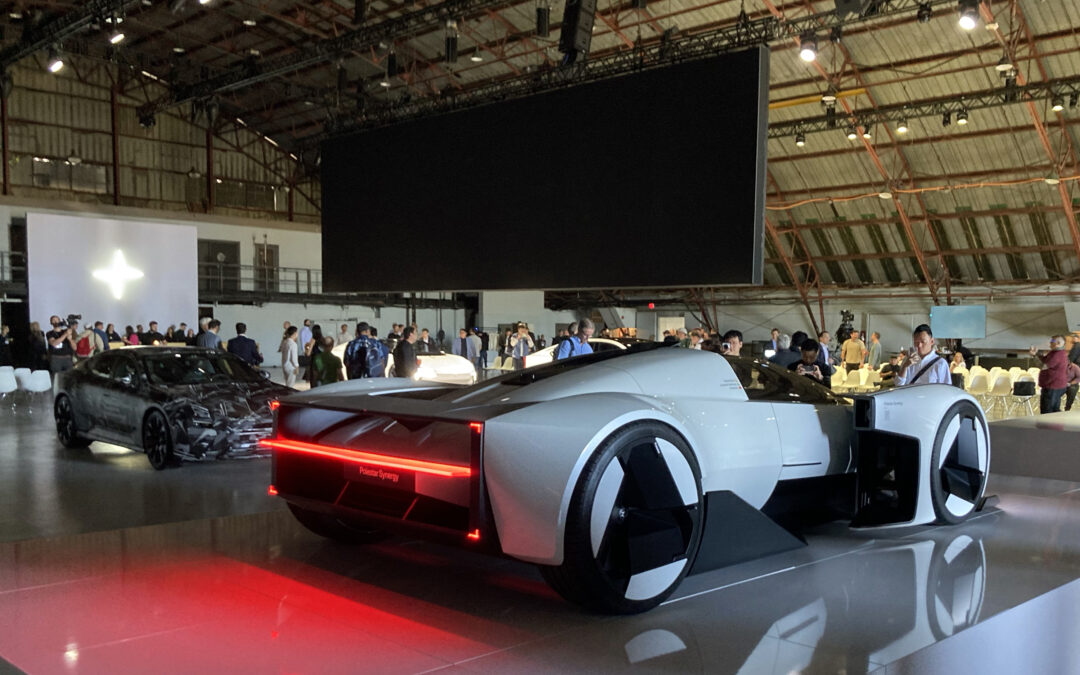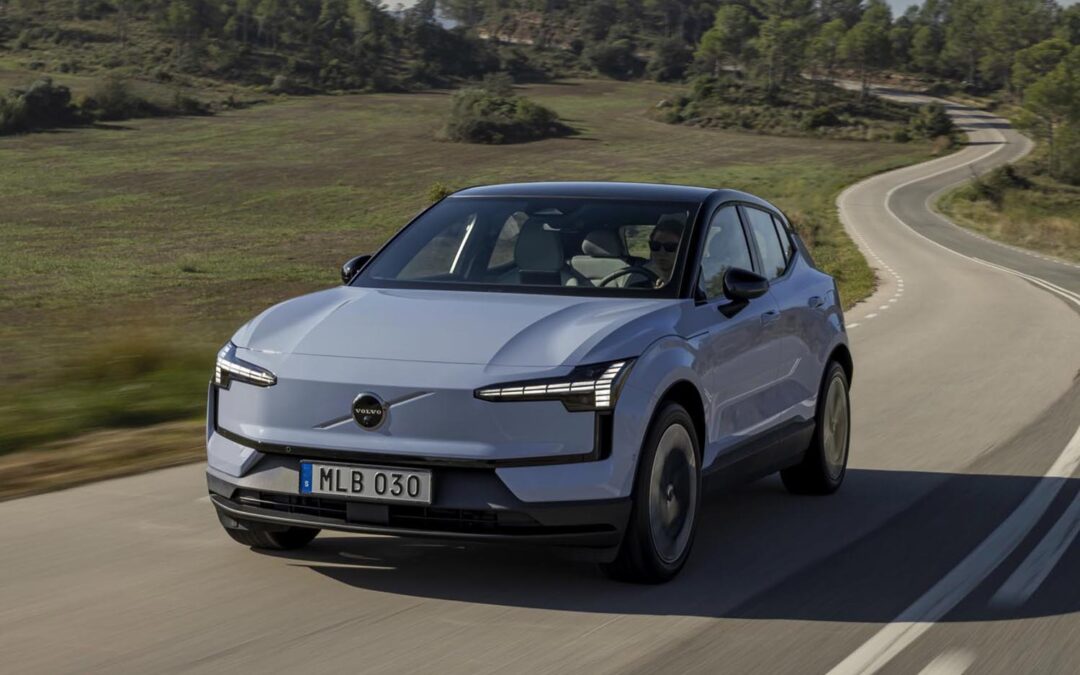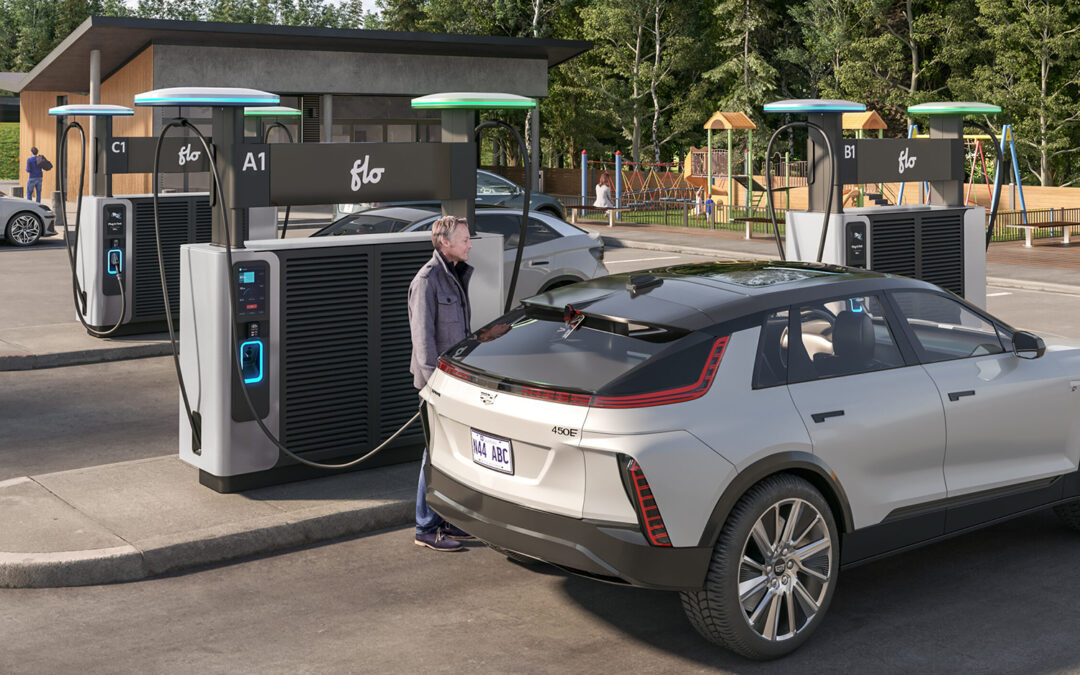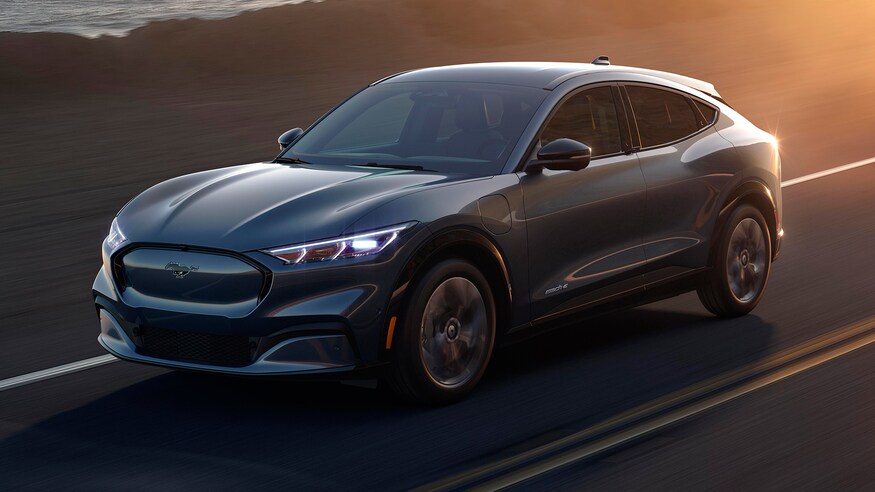From a man whose companies have built some of the most desirable and innovative cars in the world (Aston Martin Rapide, Mercedes-Benz SLS AMG, and more) as well as a slew of everyday cars for other automakers, you might be surprised at what Frank Stronach considers his “crowning achievement”.
But here I am outside of the Canadian auto magnate’s restaurant, Frank’s Organic Garden, in Aurora, Ontario, about to take a drive in his latest venture. It’s the Sarit, which is an acronym for Safe, Affordable, Reliable, Innovative Transit. And while this all-electric microcar is obviously not going to win any races, the intention here is that it will make a serious impact on emissions and traffic congestion. But the question is, how will it be accepted by general consumers in a society that craves larger and larger trucks and SUVs?
The Vision
Stronach, who headed Magna International and Multimatic, and now runs his latest venture, Stronach International, recalls heading into downtown Toronto for meetings and hitting almost insurmountable traffic, of which he realized was made up almost entirely of full-sized cars with single occupants.
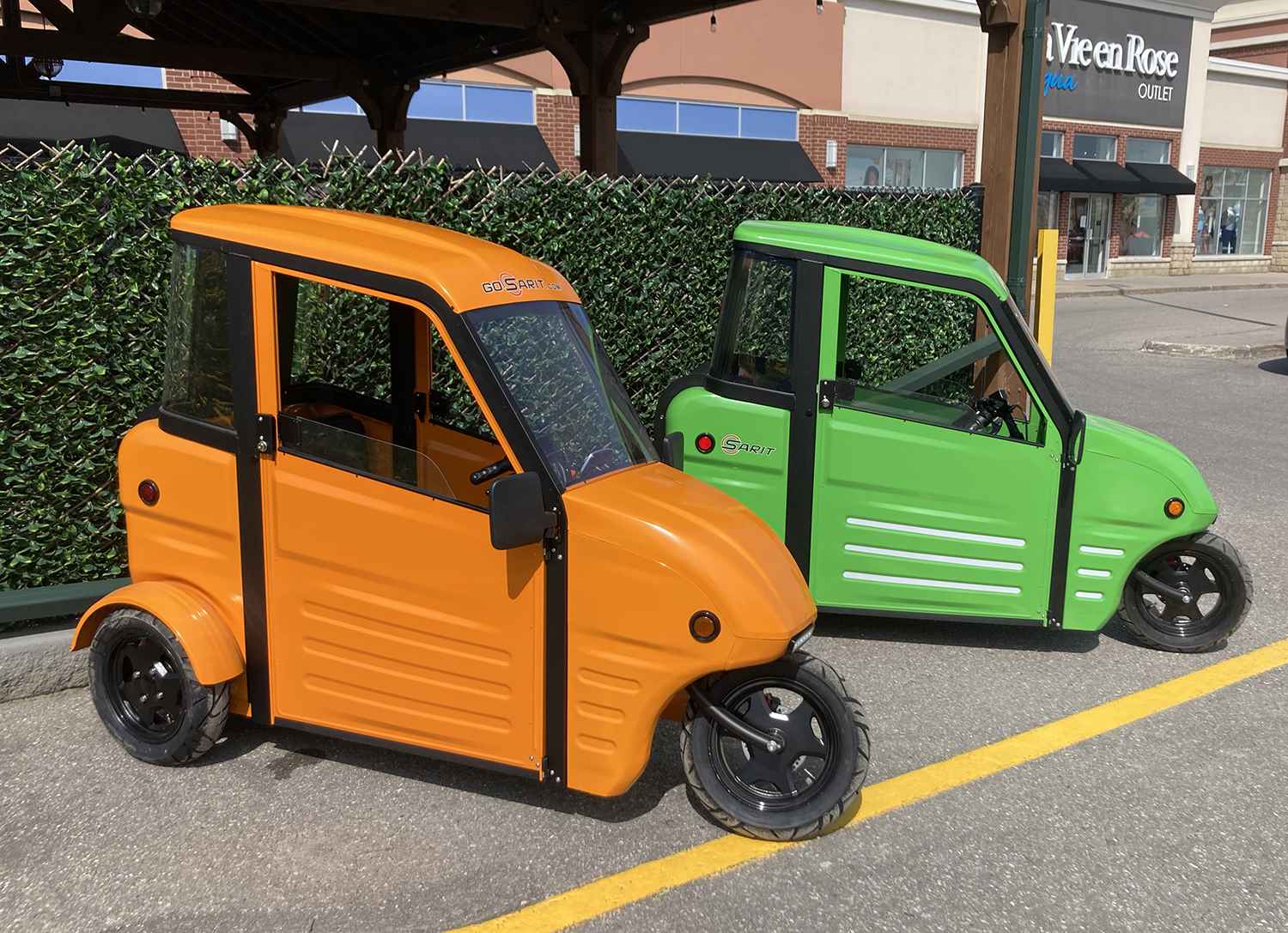
The Sarit micro EV. Neil Vorano / The Charge
“I said to myself, this is crazy,” he says. “This is absurd. It’s a waste of non-renewable energies, but worse is to inhale the carbon monoxide for a few hours every day.
“I went back to the workbench and came to the conclusion. It’s got to be an electric car. I built the first hydrogen car with BMW 15 years ago, and it’s doable, but it will be more expensive, more cumbersome for the infrastructure. So I came to the conclusion that with today’s technologies, a small electric car is the answer.”
Daniel Lajeunesse is the VP, Micro-Mobility and Commercialization at Stronach International, entrusted with making Stronach’s vision a reality. While he’s a strong supporter of e-bikes and other modes of transport, he realizes they’re not suited for everyone, especially in Canadian winters. While the Sarit isn’t meant to replace a full-size car or SUV, it is there for those short inner-city hops where a bike would be too exposed, but a car would be too much.
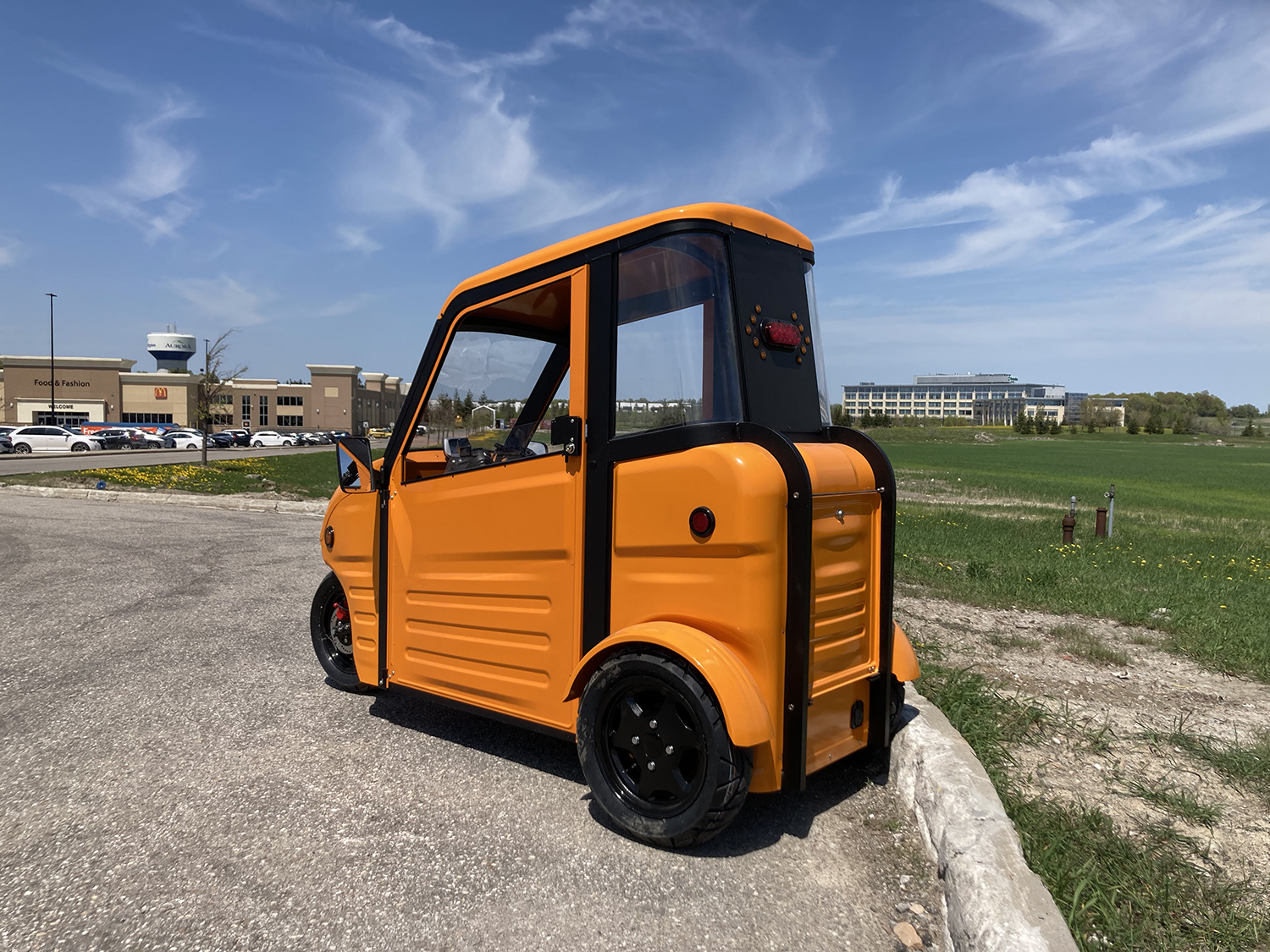
The Sarit micro EV. Neil Vorano / The Charge
“Let’s take the pros of the scooters and the bikes, let’s take the pros of vehicles,” explains Lajeunesse. “And together find a spot in the middle that supports both benefits. When you have a lot of traffic, most of the time you can get somewhere on a bike faster than you can in a car if you’re downtown Toronto. However, this vehicle provides more safety and provides greater comfort.”
Stronach also sees an ominous future when it comes to our current means of transportation, another reason why he champions the small EV.
“The way I see it, gasoline will triple in price in three years. In eight years, gasoline will be rationed. That to me, it’s amazing that we have not heard the alarm bells.”
The Concept
Stronach’s vision resulted in the Sarit. And it is tiny, measuring just three feet wide, 7.5 feet long and 5.5 feet high. It seats one comfortably, but if a passenger needs a ride the seatback can be slid rearward for cozy, motorcycle-style two-up seating. There is a small ‘trunk’ behind the seatback that can fit a few grocery bags or a backpack, though that space compresses with two passengers. Speaking of backpacks, there are four small posts at the back of the EV; the company will offer a larger, add-on trunk that it calls the – you guessed it – ‘backpack’.

The Sarit micro EV carries up to two people, motorcycle-style. Neil Vorano / The Charge
Continuing with that motorcycle theme, the three-wheeler sports handlebar controls, with a twist throttle and brake handles; there are no pedals in here. A three-speed selector and forward/reverse selector are also on the bars.

The Sarit micro EV uses motorcycle controls. Neil Vorano / The Charge
The Sarit is all aluminum, with a strong space frame (painted black) surrounded by aluminum body panels that come in various colours. The doors can also be removed easily, without tools, for open-air motoring. With a 4.6 kWh battery, the Sarit can travel up to around 100 km on a full charge. It’s also limited to just 32 km/h, as per proposed legislation on microcars, but that also means anyone can drive it, even without a licence.

The doors can also come off the Sarit micro EV. Neil Vorano / The Charge
So, a luxury car this is not; there’s no denying this is basic transportation. But it’s exactly what it says on the tin; it’s made to get someone from A to B cheaply, efficiently and with the convenience and protection of an enclosed cabin. Think of a downtown condo dweller, who could use it for errands around town. Or using the Sarit to travel from home to the commuter train station for work every morning; not only would it be a cheap drive, but four or even five can fit into the parking spot of a normal car, reducing parking congestion, too.

You can fit up to five Sarit micro EVs in the same parking spot that fits a single full-size vehicle. Neil Vorano / The Charge
There is also a pickup version in the works, with similar dimensions but with four wheels and a cargo bed that will support around 300 lbs.
The Drive
Lajeunesse leads the way around the large parking lot of the restaurant’s complex – remember, these aren’t yet certified for the road. I tentatively twist the throttle, but there’s no need to be worried here: my bright orange Sarit gets up to speed at a leisurely pace. The steering is firm and takes a bit of muscle, but it’s also very direct, switching the EV’s path on a dime.
The ride is also firm, and the electric motor whines, but Lajeunesse says the company is finalizing a smoother-riding suspension design for when it’s expected to go into production this summer.
Before taking off, I admit to being worried about turning the handlebars with something so tall and narrow, but I’m pleasantly surprised at the stability as I take some curves. Lajeunesse explains that the floor-mounted battery gives the Sarit a low centre of gravity; listen to him explain it all himself in this video:
The Plan
Already, Stronach and Lajeunesse have worked with the Ontario government with its new microcar pilot project, included in its upcoming budget. This would allow municipalities in the province to pass their own bylaws to allow the use of microcars – not just the Sarit – on their roadways.
The Sarit is mainly intended for fleets, and it’s already in a testing phase with a project at York University in Toronto (Stronach is a former governor of the school). But it will also be available for one-off consumer purchases, though at between US$6,000 to US$7,000 (around $9,000) it’s quite a bit more expensive than an e-bike. However, it charges with a regular 120 V outlet, and a single charge is good for eight or 10 times the average Canadian’s daily commute to work, so you’ll be paying next to nothing for energy.

Two Sarit micro EVs can fit into a conventional van for transportation. Neil Vorano / The Charge
Of course, even Lajeunesse agrees the Sarit and other microcars won’t completely replace a full-size vehicle – Canada is a very large country, after all. But with a little change of mindset, the microcar could be part of the mobility solution for many Canadians.
“In those circumstances where you’re driving the short distances regularly, something like the Sarit, or if you’re in a warmer climate, an e-bike and so forth, just makes a lot more sense for you,” says Lajeunesse. “And when you do need to take a drive to Montreal or Ottawa or or Windsor, just rent the vehicle. So you don’t need to have that cost of ownership of something that you use so infrequently.”
The Verdict
Back to that question: will the Sarit – and microcars in general – be adopted by a society that craves big trucks and SUVs? Short term: unfortunately, no, at least not in a meaningful way. And especially not for those living outside the larger cities. Even though the average Canadian’s daily one-way commute is less than 10 km, if gasoline prices stay relatively low, there’s little incentive for someone to give up their cushy SUV.
But the fact that the Sarit is in a test program at York U does raise some hope for the microcar, and e-mobility in general. Statistically, fewer young people are getting their licences, instead relying on Uber, e-bikes or other modes of travel. And with the average price of a vehicle expected to crest $50,000 soon, younger people may not want to spend their money on a car. Introducing them to rental fleets of microcars such as the Sarit will create a new way of thinking about mobility other than owning a large vehicle, and that will eventually change what we see on the roads, especially in urban areas. It’s just going to take some time.

